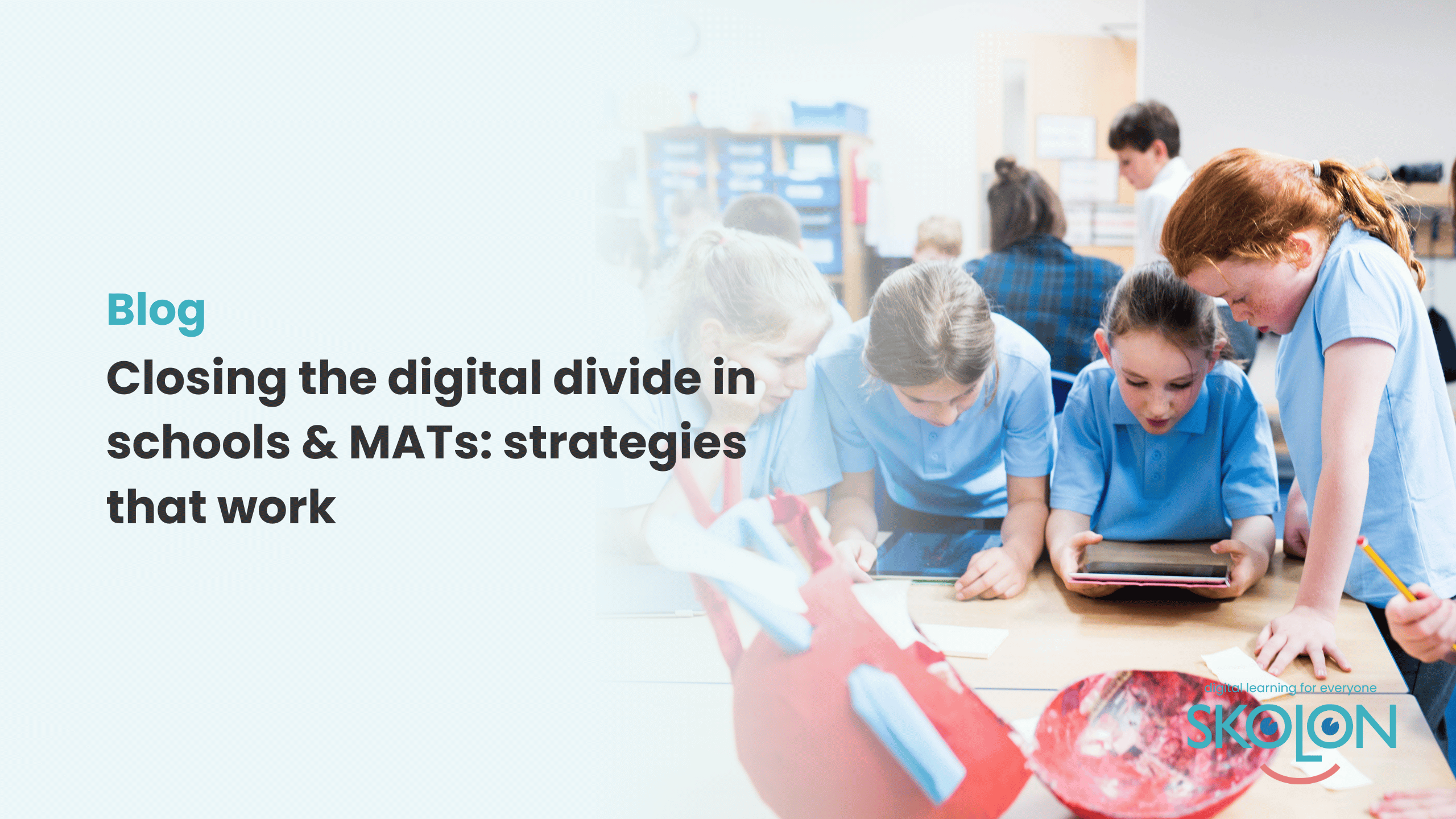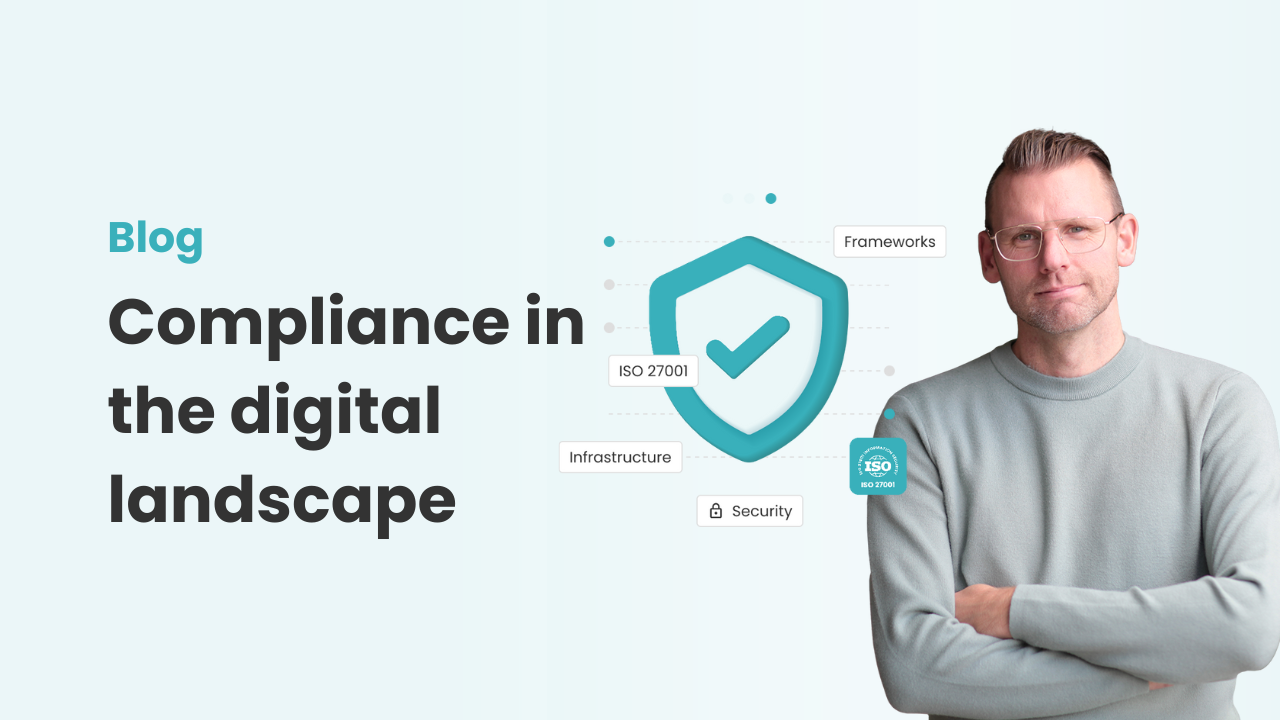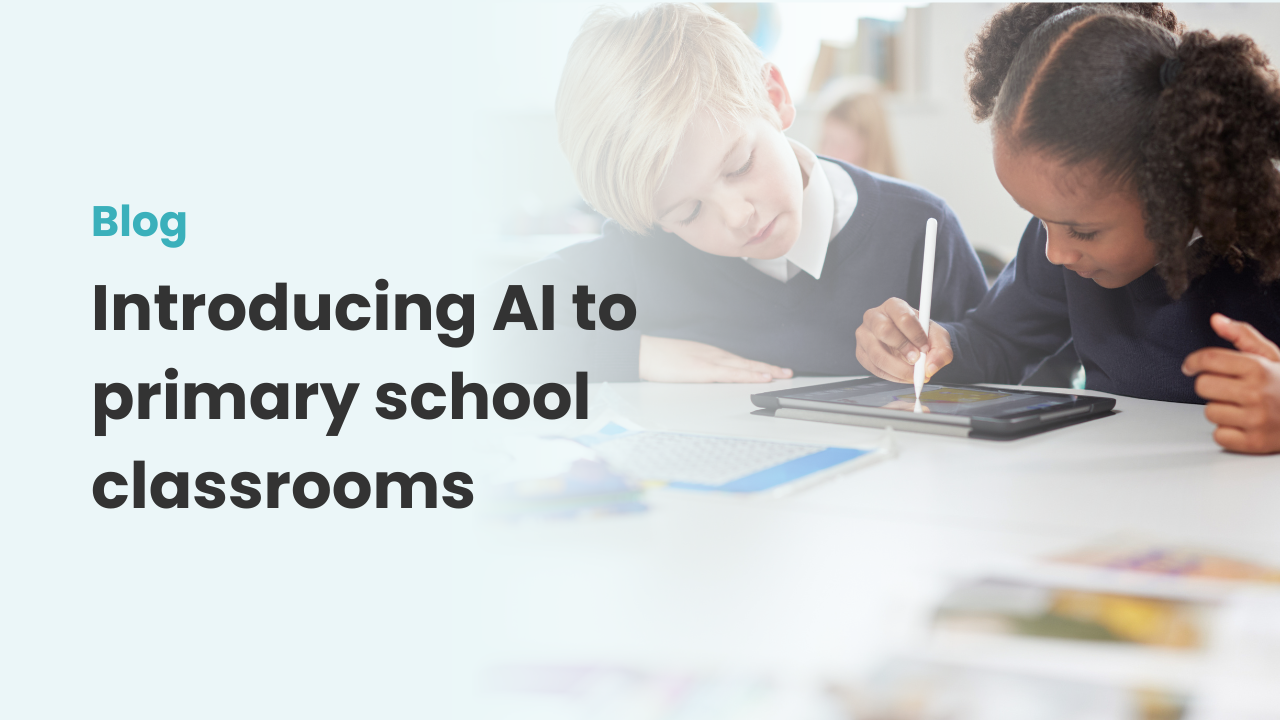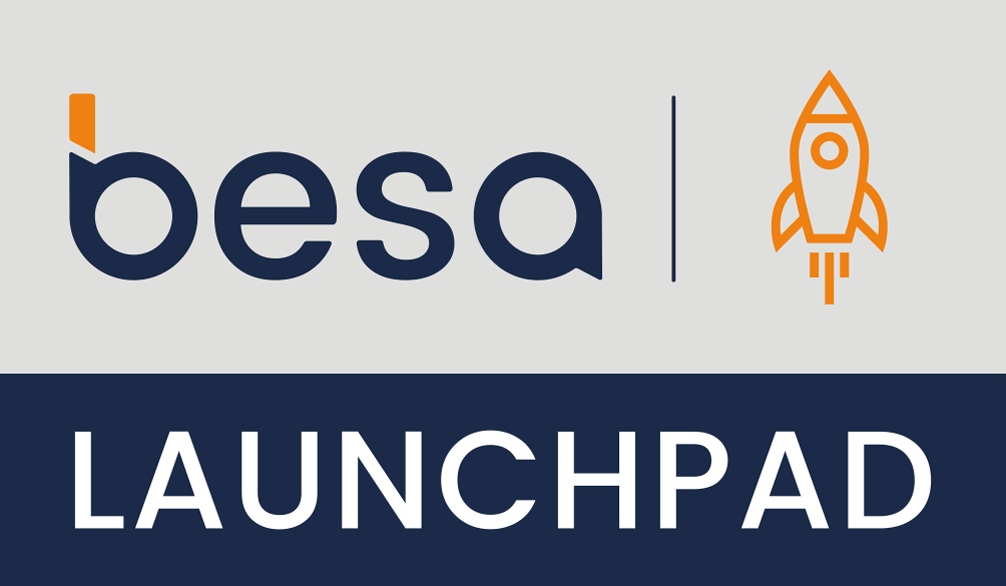Closing the digital divide in schools & MATs: strategies that work


The digital divide isn’t just about who has a device and who doesn’t; it’s a multifaceted issue of access, skills, and effective integration that can deepen existing inequalities.
For school leaders in the UK, bridging this gap is crucial to ensuring that every pupil, regardless of their background or needs, can fully engage with and benefit from digital learning.
If you are looking for insights on how to digitise a classroom or an entire school community, this guide offers actionable strategies to help your school community close the digital divide.
Mind the gap
Before you can solve a problem, you must understand its scope before you can reach a solution. The first step is to accurately identify where the digital gaps lie within your school community. This goes beyond a simple headcount of devices and a list of digital tools available to school leadership, teachers and pupils.
How to identify and understand digital gaps:
For schools within a Multi-Academy Trust (MAT) or a local authority, technology can be fragmented. Different schools may use a variety of platforms, making it difficult to get a clear, trust-wide view of digital usage. Skolon’s unified digital ecosystem helps simplify this, allowing leaders to more easily audit and monitor digital usage across all student groups, providing a single point of access and data analysis.
Providing equitable access: devices and connectivity
Once you have a clear picture of the need, you can implement strategies to provide the necessary tools to support digital pedagogy, such as:
Implementing a device loan scheme
Possibly idealistic, but a well-managed loan scheme can be an absolute lifeline for pupils without a device at home. While Skolon doesn’t provide hardware, its platform ensures that all digital resources are accessible from any device, making the most of limited hardware availability and ensuring continuity of learning. Therefore, it is advised to keep an inventory of laptops or tablets and create a clear, accessible process for pupils to borrow them.
For best practice, look to successful models from organisations like the DfE Get Help with Technology programme (which provided devices during the pandemic). Consider a system where devices can be loaned for the duration of a key learning block or even the entire academic year for those with the greatest need.
Support home connectivity
A device is useless without an internet connection. Investigate partnerships with local community organisations or businesses to provide mobile hotspots or data top-ups for families who lack reliable broadband. Signposting families to schemes from telecommunications companies, which offer affordable or social tariffs, is also an important part of this work.
Inclusive digital pedagogy and accessibility
Access to a device is just the start. The next step is to ensure that digital learning is accessible and effective for all pupils, especially those with SEND.
How Skolon helps to bridge the digital divide
Skolon’s platform was built with equity and accessibility in mind. Here’s how it can support your school’s digital inclusion goals:
Engaging and empowering parents and carers
Parents and carers are key partners in closing the digital divide. Their support for home learning is invaluable, as such, schools and trusts should provide clear, simple guidance: Don’t assume that all parents are tech-savvy. Offer training sessions or simple, jargon-free guides on how to use school platforms. This could be as simple as a video tutorial or a short leaflet.
Build a community
Creating a space for parents to share their experiences and support each other. This could be a dedicated online forum or a regular coffee morning focused on digital learning. By taking a strategic, holistic approach that focuses on understanding the need, providing equitable access, promoting inclusive use, and engaging the whole community, you can help ensure that technology becomes a tool for equity, not division.
Ready to simplify digital access for your pupils?
Use the button below to discover how Skolon can help your school or trust close the digital divide.
This is Skolon – we gather the best digital educational tools and make them work in the classroom.
Skolon is an independent platform for digital educational tools and learning resources, created for both teachers and students. With Skolon, accessing and using your digital educational tools is easy – security increases, administration decreases, and there’s more time for learning.
The digital educational tools come from both small and large providers, all of whom have one thing in common – they create digital educational tools that are beneficial for the school environment.
Information
Share this story
Subscribe
Would you like our newest articles delivered to your inbox? Sign up now!
The digital divide isn’t just about who has a device and who doesn’t; it’s a multifaceted issue of access, skills, and effective integration that can deepen existing inequalities.
For school leaders in the UK, bridging this gap is crucial to ensuring that every pupil, regardless of their background or needs, can fully engage with and benefit from digital learning.
If you are looking for insights on how to digitise a classroom or an entire school community, this guide offers actionable strategies to help your school community close the digital divide.
Mind the gap
Before you can solve a problem, you must understand its scope before you can reach a solution. The first step is to accurately identify where the digital gaps lie within your school community. This goes beyond a simple headcount of devices and a list of digital tools available to school leadership, teachers and pupils.
How to identify and understand digital gaps:
For schools within a Multi-Academy Trust (MAT) or a local authority, technology can be fragmented. Different schools may use a variety of platforms, making it difficult to get a clear, trust-wide view of digital usage. Skolon’s unified digital ecosystem helps simplify this, allowing leaders to more easily audit and monitor digital usage across all student groups, providing a single point of access and data analysis.
Providing equitable access: devices and connectivity
Once you have a clear picture of the need, you can implement strategies to provide the necessary tools to support digital pedagogy, such as:
Implementing a device loan scheme
Possibly idealistic, but a well-managed loan scheme can be an absolute lifeline for pupils without a device at home. While Skolon doesn’t provide hardware, its platform ensures that all digital resources are accessible from any device, making the most of limited hardware availability and ensuring continuity of learning. Therefore, it is advised to keep an inventory of laptops or tablets and create a clear, accessible process for pupils to borrow them.
For best practice, look to successful models from organisations like the DfE Get Help with Technology programme (which provided devices during the pandemic). Consider a system where devices can be loaned for the duration of a key learning block or even the entire academic year for those with the greatest need.
Support home connectivity
A device is useless without an internet connection. Investigate partnerships with local community organisations or businesses to provide mobile hotspots or data top-ups for families who lack reliable broadband. Signposting families to schemes from telecommunications companies, which offer affordable or social tariffs, is also an important part of this work.
Inclusive digital pedagogy and accessibility
Access to a device is just the start. The next step is to ensure that digital learning is accessible and effective for all pupils, especially those with SEND.
How Skolon helps to bridge the digital divide
Skolon’s platform was built with equity and accessibility in mind. Here’s how it can support your school’s digital inclusion goals:
Engaging and empowering parents and carers
Parents and carers are key partners in closing the digital divide. Their support for home learning is invaluable, as such, schools and trusts should provide clear, simple guidance: Don’t assume that all parents are tech-savvy. Offer training sessions or simple, jargon-free guides on how to use school platforms. This could be as simple as a video tutorial or a short leaflet.
Build a community
Creating a space for parents to share their experiences and support each other. This could be a dedicated online forum or a regular coffee morning focused on digital learning. By taking a strategic, holistic approach that focuses on understanding the need, providing equitable access, promoting inclusive use, and engaging the whole community, you can help ensure that technology becomes a tool for equity, not division.
Ready to simplify digital access for your pupils?
Use the button below to discover how Skolon can help your school or trust close the digital divide.
This is Skolon – we gather the best digital educational tools and make them work in the classroom.
Skolon is an independent platform for digital educational tools and learning resources, created for both teachers and students. With Skolon, accessing and using your digital educational tools is easy – security increases, administration decreases, and there’s more time for learning.
The digital educational tools come from both small and large providers, all of whom have one thing in common – they create digital educational tools that are beneficial for the school environment.
Share this story
Subscribe
Would you like our newest articles delivered to your inbox? Sign up now!




